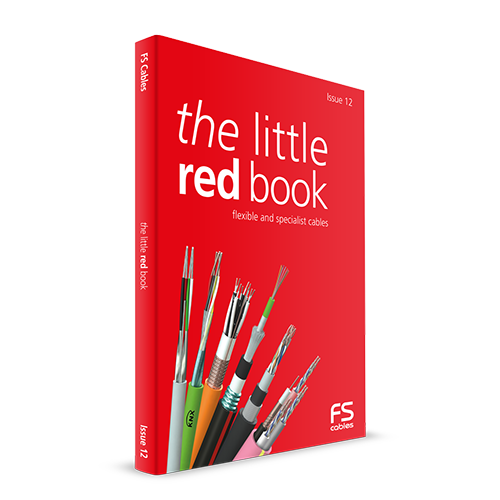Posted 17 July 2019
The purpose of a jacket or sheath is the same as skin – to keep the outside out and the insides in. Jackets come in many different forms from braids and tapes to the more common extruded thermoplastic or thermosetting materials.
Extrusion refers to the process of squeezing the sheathing material through a funnel or die as the cores run through the centre. The sheathing material may either be extruded molten or cold with a later curing process.
There are two types of extrusion – tube extrusion or tight/pressure extrusion. Thermoplastic materials – PVC, PE and some low smoke halogen free (LSHF) – can be tube extruded creating a smooth uniform thickness around the jacket.
The advantages of tube extruded jackets include savings on weight and materials and easier stripping. Tube extruded jackets also provide a smooth finish without heavy ribbing or ‘barley sugar effect’ twisting.
Pressure or tightly extruded jackets on the other hand hold the cores tightly in place as the jacket fills the gaps or interstices in the core bundle. This is better for common flexible cables especially where the cables are likely to be used in physically tough environments.
However disadvantages can include potential problems with stripping, an increase in weight and cost through the requirement for more materials. Additionally, on cables with an oddly shaped core bundle – for example a 2 pair cable – pressure extrusion can result in a ribbed or twisted appearance.
On some power and marine cables it is common to have a bedding over the core bundle to give the cable a rounder shape prior to applying the outer jacket. This bedding is extruded in the same way as the jacket and may be made from the same or a similar material. Often, a ‘putty like’ material is used which can be easily removed upon termination.
When choosing a jacket material a number of factors need to be taken into account before specifying. These include: the application of the cable, physical stresses, chemical or solvent contamination, light or UV stability, heat or cold resistance, any LSHF requirements and any aesthetic or tactile considerations.
It is also important to look at the entire cable as a chain, always paying attention to the proverbial weakest link. For example, it makes no sense to choose an expensive LSHF sheath if the cores are PVC insulated. In the event of fire, the PVC cores will emit harmful gases negating any LSHF benefit.
Cables used for medical equipment may need to be sterilised in an autoclave after use. In this case heat will be a big consideration although flexibility and ‘feel’ are also very important.
Where cables are prone to attack from chemicals, for example when buried in contaminated ground, it is sometimes necessary to use multiple sheathing layers including nylon or aluminium to prevent the chemicals or hydrocarbons from reaching the core bundle. Aluminium tapes are also used as moisture barriers on some external telephone and instrumentation cables.
Lead has almost died out as a sheathing material for environmental reasons. Few factories are now able to produce lead sheathed cables.
Mineral insulated copper clad (MICC) cables were one of the original fire resistant cables. They still remain one of the most indestructible cables, albeit expensive and difficult to install.
MICC cables use a copper outer sheath filled with a compressed mineral insulant to protect the core bundle.
In some countries cables are prone to attack by insects and rodents. In the past it was not uncommon to dope the sheath or jacket with poison. This has obvious environmental drawbacks. These days it is more common to use a galvanized steel tape to protect the inner sheath from rodent attack recognising that the outer jacket may be eaten away after the cable has been installed.
Braid sheaths are used for a variety of purposes ranging from aesthetic or tactile considerations or simply decorative effect. For example they are often used in domestic appliances such as irons and light fittings, or for heat resistance in the case of glass or ceramic braids.
Whatever your application, if you have a special requirement please speak to one of our technical team who will always be pleased to help.






